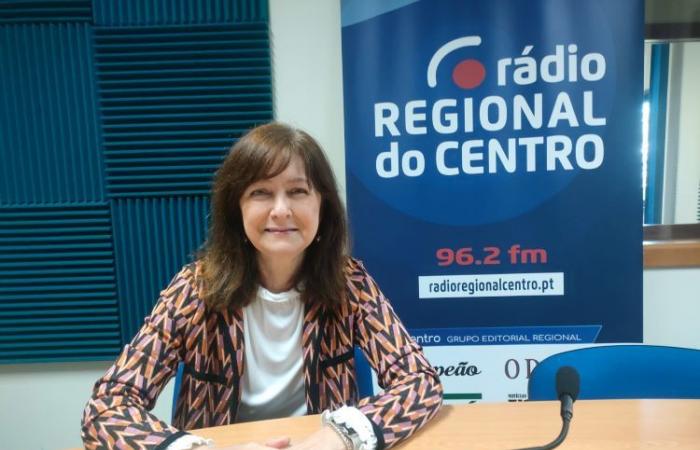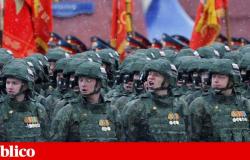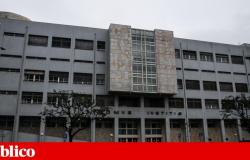Cristina Freitas is director of the 25 de Abril Documentation Center and is a professor at the Faculty of Arts of the University of Coimbra, where she teaches subjects in the three study cycles in Information Science, supervising master’s dissertations, doctoral theses and extracurricular internships. Currently, she also serves as director of the Archives of the University of Coimbra and is part of several research institutions, notably the CEIS20 Research Center of the University of Coimbra and the ARBIDOC groups of the University of León and Teresa Andrés of the University of Salamanca.
Provincial Champion [CP]: We are celebrating 50 years of April 25th. I imagine the Documentation Center is now in the eye of the storm.
Cristina Freitas [CF]: I use precisely that expression. We are right in the eye of the storm. We have a small team for an event of this size, but we are able to respond to requests and disseminate documentation of the 25th of April throughout all corners of the national territory and also across borders. For people to understand the legacy that Coimbra has, because this is the only documentation center about the 25th of April in the country, it is necessary to understand who we are. We will also celebrate, this year, our own anniversary, because while the 25th of April celebrates 50 years, next December, we will celebrate 40 years of existence. This institution was born from a great desire to preserve, so to speak, the memory of the 25th of April. The Revolution is our central theme, but there are other very important themes reflected in our collections.
[CP] What can you find in the Documentation Center?
[CF]: Many things. The first caveat I want to make is that we are not a research center. People often confuse it with a documentation center, which is what we are and, as such, what we do is provide information to researchers. A documentation center can collect different types of documents associated with a particular theme or subject. In our case, it was born around this central theme, which is the revolutionary movement of the 25th of April. We have, for example, sound recordings and radio transmissions associated with the 25th of April and they are in great demand. Some have already been digitized, others are still in their original analogue form. We have audiovisual records and we also have a unique set that is owned and authored by the Center, which are oral history records. These are interviews that were carried out with selected personalities, many of whom are no longer with us. Long interviews were carried out, which involved study, and I would say that this is one of the jewels in the Center’s crown, due to the fact that this is unique and highly sought after material. We also have classic documents, on paper, such as the map and plan of military operations, letters and aerograms that were exchanged between family members and soldiers involved in the colonial war, many series of photographs, posters, murals, stickers and period newspapers . We have a very large collection of newspaper clippings and we continue to clip this type of information every day to expand the collection. Therefore, we play a very important curation role in the approximately four million physical documents we have. It is essential to ensure their preservation, including humidity and temperature control, avoiding damage to the most sensitive documents such as photographs and films. In addition, we carry out regular cleaning to remove dust and control the proliferation of pests. The curation work also extends to digital, including the maintenance and replacement of media and even obsolete servers. It is a complex challenge, but necessary to guarantee the integrity of this very valuable collection.
[CP]: What is this exhibition that is touring the country?
[CF]: “The Legacy of a Carnation”, as it is called, is made up of 12 panels that tell the story before, during and after the 25th of April. All these contents are certified. We live in an era where we fight fake news and it is very important to work with safe sources. I think the success of this exhibition goes in two unique directions. Firstly, because we managed to reduce this extraordinary event to 12 panels and publicize it in an educational and attractive way for a varied audience. Second, because there is no parallelism between this movement and others that occurred before or after. It’s a unique movement. The research carried out in documentary sources was very thorough and precious documents were found, which show different perspectives, mainly the popular one. This makes the exhibition closer to citizens and I believe that is the intention behind its design. It is the result of a partnership between us, the Aljube Museum and the company Alumira. They created the exhibition and gave us a reproduction to promote. Ours is already sold out until next year, but we refer interested people to the production company, which responds to requests, so that “O Legado” reaches those who request it.
[CP]: The Center will celebrate 50 years of the Revolution, but also 40 years of existence. What do you have planned?
[CF]: I took over as Director of the Center almost a year ago, in May 2023. We started working towards what would be the movement’s fiftieth anniversary, so we are following a little of what is happening across the country. There is a national Commission, as you know, around the celebrations, and this Commission will celebrate April 25th until 2026. The Center will also extend the celebrations for the same period. At this time, we prioritize responding to all requests we have in hand. There are many requests from authors, curators or producers, who are going to publish books, create exhibitions or documentaries about the 25th of April and need our images, audios and documents. We have to respond to these people, that is, we have to put the Movement in the spotlight, more than the institution itself. Therefore, we decided to expand our initiatives over time. On April 25th, there will be a simple activity, organized with the Liga dos Combatentes and Rebobinar, in our building and in the Cloisters, on Rua da Sofia, at Colégio da Graça. There, we will do guided tours, readings of lesser-known poems , by young people, children of our collaborators, performances by the Coro das Mulheres da Fábrica and Tuna Souselense. Beyond that day, we will continue our work of providing traveling exhibitions and systematically collecting information, which will be processed, creating a dossier on the celebrations, which we will later make available for consultation by journalists, researchers and the Center’s public.
[CP]: Is there also documentation from before the 25th of April at the Center?
[CF]: Yes, because to understand the historical fact itself, we have to go back in time a little. And also move forward a little. We collect documentation in this way and we are often asked what our criteria are, because we are dealing with very sensitive topics, which involve the community, population, politics, economy and society and because we are a documentation center. One of the criteria we use is chronological. So, let’s go a little further back in time, which is why the Center broadened its spectrum, initially situated around just the 1974 Movement. And then, of course, our geographical and thematic criteria also come into play. We cannot escape our work objective. It is important to say that any institution of our nature, for example, the National Library, adopts selective criteria like those that we also adopt. The user has to trust the institution, which means we cannot be biased. Of course, there is always subjectivity behind the collections we make, but we have to control this subjectivity with objective criteria for selecting themes and documents.
[CP]: She is also director of the Archives of the University of Coimbra. Are there many initiatives taking place there?
[CF]: Yes, it is worth mentioning that this Archive has almost 11 km of collection. Nowadays, archives are opening up more to society, which is important. I can mention “Open Conversations”, a section that we inherited from Dr. Rodrigues Costa and which is already on its way to its fifth year with us. It always takes place from January to June, on the last Friday of the month. If there is a holiday that falls on that day, we move the session to the Friday immediately before. This section has been very important for us, as in “Open Conversations” we address crucial topics in Coimbra and of interest to the community that lives and works here. This year the conferences have been very popular. In the last session, which was about the Jewish baths in Coimbra, we had to find more chairs, because there were no longer any places for people to sit. Now, we will have another session on heritage (16th century houses). We will also have one last session, exceptionally in July, which is very interesting, where environmental activists will talk about environmental preservation initiatives in the various areas and mountains of the Coimbra district.
Interview: Luís Santos/ Joana Alvim
Published in the edition of “Campeão” on paper dated Thursday, April 25, 2024
Tags: Interview Cristina Freitas Centro Abril Coimbra documents revolution
--





